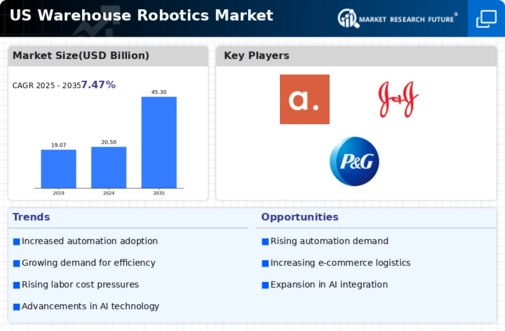Market Share
US Warehouse Robotics Market Share Analysis
In the dynamic landscape of the US Warehouse Robotics Market, companies employ various market share positioning strategies to gain a competitive edge and solidify their presence. One prominent strategy involves differentiation, where companies focus on offering unique features or capabilities that set their robotics solutions apart from competitors. This could involve advanced technologies, such as artificial intelligence (AI) integration, enhanced efficiency, or specialized applications tailored to specific industries. By emphasizing these distinctive aspects, companies aim to carve out a niche for themselves and attract customers seeking specialized solutions tailored to their warehouse needs.
Another key market share positioning strategy is cost leadership. Some companies prioritize cost-effectiveness, aiming to provide high-quality warehouse robotics solutions at a lower price point than competitors. This approach can be particularly attractive to cost-conscious customers looking to optimize their operations without breaking the bank. By strategically managing production costs, companies can offer competitive pricing without compromising on the quality and reliability of their robotic systems, ultimately appealing to a broader customer base.
Collaboration and strategic partnerships represent yet another avenue for market share positioning in the US Warehouse Robotics Market. Companies often join forces with other players in the industry, forming alliances that leverage complementary strengths. Whether through partnerships with software developers, integrators, or logistics experts, collaborative efforts enable companies to offer comprehensive solutions that address a broader spectrum of customer needs. This approach not only expands market reach but also allows companies to capitalize on the expertise of their partners, fostering innovation and enhancing the overall value proposition.
Adaptability is crucial in the rapidly evolving warehouse robotics sector, and companies pursuing a market share positioning strategy frequently prioritize flexibility. This involves designing robotic systems that can be easily customized or scaled to accommodate varying warehouse sizes, layouts, and operational requirements. The ability to adapt to different environments and evolving customer needs positions companies as reliable and future-ready partners, capable of providing solutions that grow alongside their clients' businesses.
Customer-centric strategies also play a pivotal role in market share positioning. Successful companies prioritize understanding their customers' pain points and tailoring their solutions accordingly. This customer-centric approach involves not only providing effective robotics solutions but also offering comprehensive support, training, and maintenance services. By building strong relationships with clients and addressing their specific challenges, companies can cultivate loyalty and secure a larger share of the market, as satisfied customers are more likely to become repeat buyers and advocates for the brand.








Leave a Comment